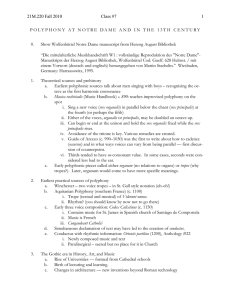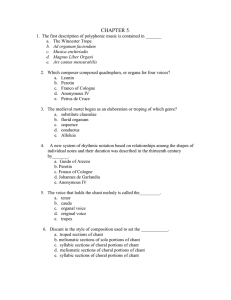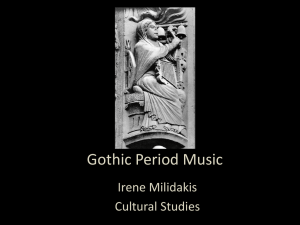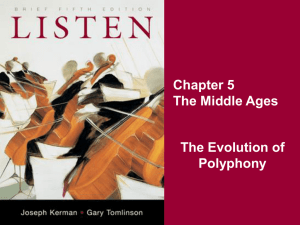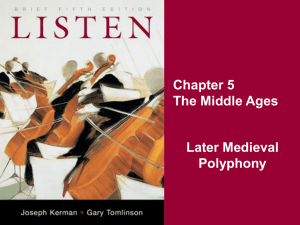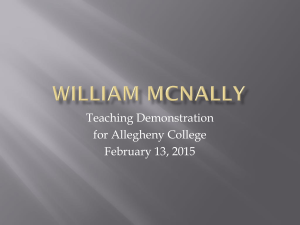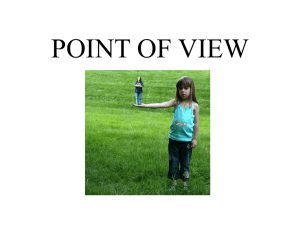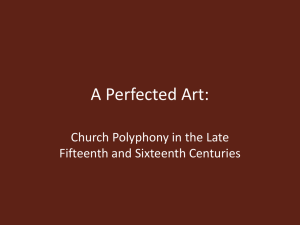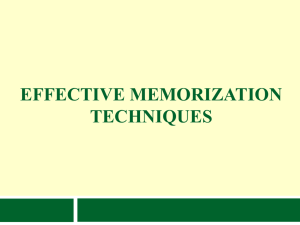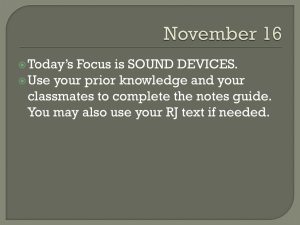Music in Classical Antiquity
advertisement
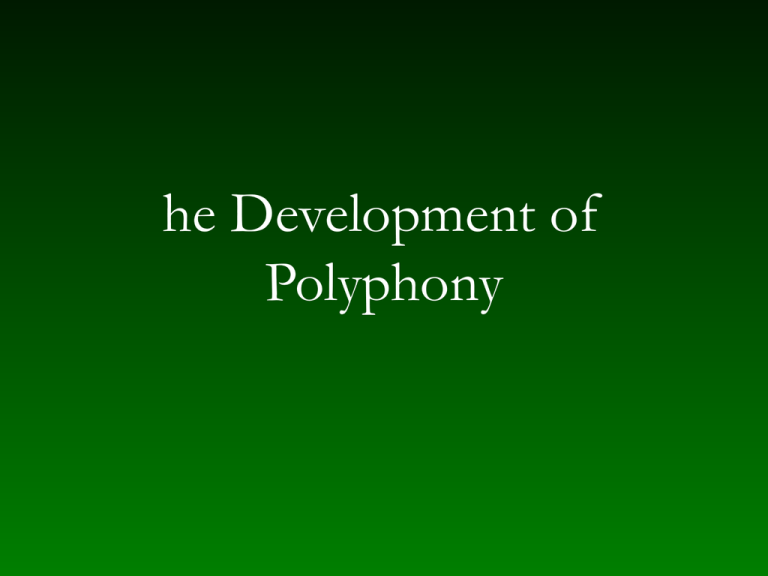
he Development of Polyphony Polyphony in the ninth and tenth centuries • Artistic style of Carolingian/imperial period — addition of mass • Addition of weight to chant – magadizing (parallel singing) – troping • Only textbook musical examples survive Textbook descriptions of early organum • Musica enchiriadis, Scolica enchiriadis (ca. 900) – Frankish • Vox principalis doubled at fifth or fourth below by vox organalis – note-against-note style (punctus contra punctum) – both may be doubled in octaves, producing both fifths and fourths • Oblique (and contrary) motion – provides sense of opening and closing – allows temporary dissonance and resolution Guido of Arezzo, Micrologus (ca. 1025) — principles for organum • Allows voice crossing • More variety of intervals — sometimes from drone effect in vox organalis • Contrary-motion cadences become the norm Music in the Romanesque period • Social stability leads to time and interest for composition — period of troubadours • Sacred and secular societies developed skill and time for rehearsal of complicated music Winchester Troper (early eleventh century) — examples of organum • Principal voice generally above, but some voice crossing • Mostly note-against-note texture • Organal voice has wider range • Considerable use of dissonance, often seems empirical or even haphazard • Mixed motion — preference for 3–1 contrarymotion cadences Ad organum faciendum (French, ca. 1100) — how to improvise organum • Principal voice lower (sometimes crosses) • Mostly note-against-note texture • For soloists in responsorial chants — organal part has wider range • More conservative harmony than Winchester style (melodic style suffers) • Fourths and fifths most common, also uses unison and octave and even thirds and sixths • Contrary-motion cadences The Abbey of St. Martial — Limoges Aquitainian polyphony — St. Martial organum • New polyphonic style – principal voices not always based on standard liturgical music – principal voice lower, but occasionally voices cross • Distinction of types – organum (later organum purum) — melismatic or florid – discant — more or less note-against-note passages, actually neume against neume • Versus style — rhymed, metrical poetry • Rhythm in all types roughly indicated by alignment Codex Calixtinus (ca. 1170) • From Santiago de Compostela – major pilgrimage site via several monasteries in southern France, including St. Martial – important Romanesque cathedral • Manuscript named for Pope Calixtus (or Calixtine) II (r. 1119–1124) • Mostly liturgical monophony — twenty polyphonic examples appended – style comparable to Aquitainian repertoire – organal style mostly for responsorial chants – discant style for versus and other ensemble music Organum from Codex Calixtinus Gothic architectural aesthetics • Not just elaboration but order • High and layered • Intricate decoration • Ex., Notre Dame de Paris University of Paris • Gathering of teachers – order applied to learning • Charter — 1200 (name “universitas” 1215) • Discipline faculties – arts – medicine – law – philosophy – theology A student’s day at the University of Paris — an ordered schedule • • • • • 5:00–6:00 — arts lectures Mass 8:00–10:00 — lectures 11:00–12:00 — disputations or debates 1:00–3:00 — repetitions with tutors on morning lectures • 3:00–5:00 — special-topic lectures • 7:00–9:00 — study, repetitions with tutors Scholasticism — order applied to knowledge • Method – lecture based on reading of authoritative text – orderly treatment of pros and cons – disputation • Leaders – Peter Abélard (1079–1142), Sic et non — applied reason to theological issues – Thomas Aquinas (1225–1274), Summa theologica — covered all of theology Early composers of Gothic polyphony — identified by Anonymous IV • Léonin (Magister Leoninus, fl. ca. 1175) — university background – Magnus liber organi — solo parts of responsorial chants of Office and Mass for liturgical year • Pérotin (Magister Perotinus, fl. ca. 1200) — major contributions identified by Anonymous IV – revised and replaced parts of Léonin’s work – organum triplum, organum quadruplum – “optimus discantor” — wrote many clausulae Types of Notre Dame polyphony • Organum purum – lower voice ultra mensuram (called tenor) – more likely when tenor is more syllabic • Discant – both voices measured — requires rhythmic notation – more likely when tenor is melismatic • Clausula – discant segment – new compositions may have substituted for preexisting discant clausulae Léonin, Organum “Viderunt omnes” Pérotin, Organum “Alleluia Na[tivitas]” Rhythmic modes in Notre Dame polyphony — ordering the parts 1 (trochaic) long-short ( ) 2 (iambic) short-long ( ) 3 (dactylic) long-short-short ( . 4 (anapestic) short-short-long ( 5 (spondaic) long-long ( . 6 (tribrachic) short-short-short ( ) .) .) ) Ordering rhythm in the discant clausula • Patterning of tenor rhythm – repetition of an ordo (pl. ordines) • Paired with rhythm in different mode in duplum • Early tendency for tenor and duplum ordines to match; later more common to overlap Polyphonic conductus in Notre Dame style — nonliturgical polyphony • Texts – could be for religious use and on religious topics – often secular — expresses cultural concerns outside church • lament • civic events – Johannes de Grocheio (ca. 1320): “sung at parties of the wealthy and educated” • Music – two to four voices – newly composed tenor – generally syllabic, familiar style – often has melismatic caudae Motet • Begins with addition of words (mots) to untexted upper voice(s) of independent discant clausulae • Polytextual — named by all three texts (triplum, motetus, tenor) Stages in the content of motet texts • Early — gloss on text of tenor • Later — free secular, vernacular – may still be distant gloss on tenor text – closely related to trouvère song — even borrowing melodies (motet enté –“grafted”) Stages in style development in motets • As with discant, rhythmic ordines lend unity – more sophistication in staggering phrasing among lines • Texting – two-part composition — second text in motetus – three-part composition — same text in motetus and triplum – three-part composition — different texts in motetus and triplum • Distinctions in style among lines — layered rhythm • Tenor treatment – repetition to increase length – freely composed — called “tenor” or “neuma” Social position of 13th-century motets • Originally developed in sacred context • Came to be used as secular genre for elite class – Johannes de Grocheio (ca. 1320) — motets in modern style only for the educated, who could understand their subtlety – Jacques de Liège (ca. 1320) — aimed at educated lay society Motet in late 13th century • Franco of Cologne (fl. 1250–1280) — theorist and composer • Problem of how to indicate rhythm in syllabic music — motets (conductus) • Solution – note shapes — long, breve, double long, semibreve (L, B, DL, SB) – dots to mark perfections • practical result — choirbook notation to save space — use of parts rather than score Motet in choirbook notation Petrus de Cruce, S'amours eust point de poer / Au renouveler / Ecce New problems for the motet • Petrus de Cruce (fl. 1270–1300) — composer and theorist • Free rhythm and even shorter note values in upper parts — many SBs in the space of a B (rhythmic inflation) Questions for discussion • How was the development and spread of polyphonic music in the eleventh and twelfth centuries a product of political and social conditions and events? • How did different cultural, political, and ecclesiastical institutions in Paris around 1200 contribute to the growth of a Gothic polyphonic style? • What aspects of contemporary cultural and aesthetic tendencies did the thirteenth-century motet express?
